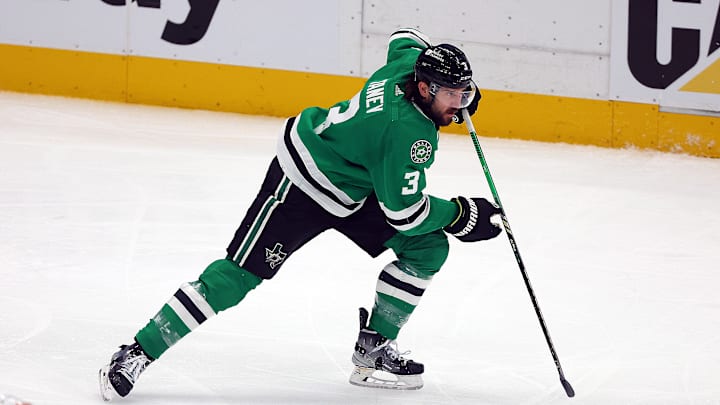The Toronto Maple Leafs went into this summer with major questions marks surrounding the roster. Specifically, many fans and analysts criticized the Toronto Maple Leafs blue line. Beyond Morgan Reilly, Jake McCabe the Leafs blue line lacked quality NHL players.
So, GM Brad Treliving made a splash by signing Christ Tanev and Oliver Ekman-Larsson. Both veteran defensemen are on the wrong side of 30, prompting criticism and debate about their long-term value to the Leafs.
Therein lies the issue.
The Leafs signed Tanev to a six-year deal. Given Tanev’s age, playing style and injury history, it’s highly unlikely that he will see play out the contract. Now, we could be wrong. Tanev could channel his inner Mark Giordano and play on the Toronto Maple Leafs bottom-pairing till the age of 40. However, that’s not realistic.
The fact of the matter is that Tanev’s contract exposes the Leafs long-term strategy: Long-term injured reserved (LTIR). Both Tanev and Ekman-Larsson are unlikely to see their contracts through to the end. As such, there’s a high probability that both Tanev and Ekman-Larsson end up on LTIR before their contracts are up.
Toronto Maple Leafs Using LTIR As Part of the Team’s Cap Strategy
The Leafs aren’t technically doing anything illegal or unethical. Signing Tanev to a six-year deal is like a bet the Toronto Maple Leafs are placing on Tanev playing till he’s 40.
But if Tanev gets hurt or his body simply cannot cope with the rigors of NHL play, the Leafs can place him on LTIR rather than buy him out or waive him. As such, the LTIR loophole allows teams to spend over the cap rather than dump contracts or trade useful players.
However, there are penalties. If you do not use LTIR during the season, you accumulate cap space which you can use at the trade deadline.
Still, we've seen plenty of teams use this approach, notably the Tampa Bay Lightning and Vegas Golden Knights. The fact that the Tanev may not play beyond the second or third year of this deal allows the Maple Leafs to use Tanev’s cap hit to sign another player.
Meanwhile, that extra cap space could come in handy assuming the team needs to fit in Mitch Marner’s new deal, along with other future RFAs or free agents.
It’s worth pointing out that this strategy is not about sending Tanev off to Robidas Island. It’s not that Tanev would suddenly an ineffective, albeit healthy player. It’s that Tanev, and Ekman-Larsson for that matter, may not stay healthy in the long term. Thus, the Leafs have an ace in their back pocket.
The fact of the matter is that the Leafs are playing chess with this move. While some fans and analysts may not like it, it seems like Treliving knew what he was doing when he signed Tanev to a six-year deal. The Leafs weren’t capitulating to the whims of an in-demand player. The Leafs were thinking ten moves ahead.
